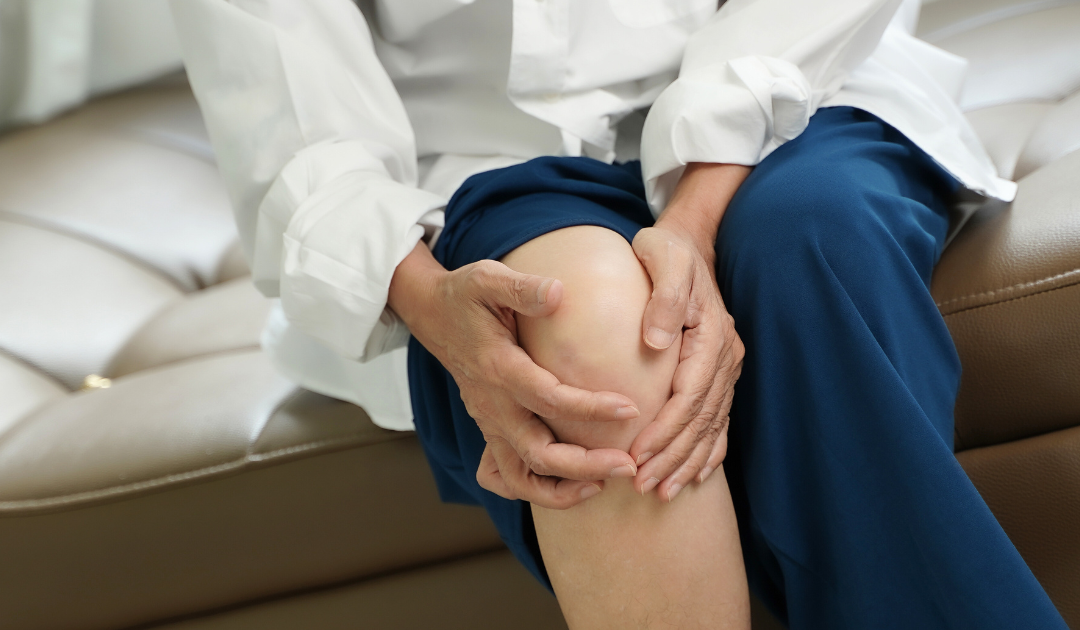Arthritis is a common chronic condition characterized by inflammation and stiffness in the joints. It affects millions of people worldwide and can significantly impact their quality of life. While medication and other forms of treatment are available, yoga poses have been found to be beneficial in managing arthritis symptoms and improving overall well-being.
The right type of yoga practice can not only help you build muscles and bone strength but also enhance your flexibility , mobility and balance.
Impact of Arthritis on Daily Life
Arthritis can significantly impact a person’s daily life and overall well-being. The chronic pain and stiffness associated with arthritis can make simple tasks challenging, affecting mobility, independence, and overall quality of life.
Arthritis can make it difficult to perform activities of daily living, such as dressing, grooming, and household chores. The pain and stiffness can also interfere with work productivity, leading to decreased performance and potential loss of employment.
Furthermore, the limitations caused by arthritis can affect one’s social life and mental well-being. Arthritis sufferers may experience reduced participation in social activities, hobbies, and exercise, leading to feelings of isolation and depression.
Is Yoga Good for Arthritis?
There are many types of arthritis and their causes and symptoms vary. But one apart from getting proper medical care staying physically active is crucial to mitigate the impact of arthritis on your daily life. Several studies have proven that yoga is beneficial ina various conditions including arthritis. Yoga can help in arthritis in the following ways:
- Yoga is a low-impact form of exercise that doesnot involve high impact movements. This means that you won’t put extra stress on your joints.
- Yoga also offers psychological benefits like various stress management techniques like relaxation, breathing and mindfulness.
- By practicing yoga poses for arthritis, individuals can enhance joint flexibility, strengthen muscles around the affected joints, reduce pain and inflammation, and promote relaxation and stress management. These benefits can lead to improved mobility, increased energy levels, and a better ability to engage in daily activities, ultimately enhancing the overall quality of life for arthritis sufferers.
Gentle Yoga Poses for Arthritis
Warm-up Poses
Neck Stretches
Sit comfortably with a straight spine. Gently tilt your head to the right, bringing your right ear towards your right shoulder. Hold for a few breaths, then repeat on the left side. Continue alternating sides, feeling a gentle stretch along the side of your neck.
Neck stretches relieve tension and stiffness in the neck and shoulders.
Shoulder Rolls
Stand tall with your feet hip-width apart. Lift your shoulders up towards your ears, then roll them back and down in a circular motion. Repeat for 5-10 rounds, then reverse the direction.
Shoulder rolls improve shoulder mobility and release tension in the upper back.
Wrist Circles
Extend your arms forward, palms facing down. Begin to circle your wrists in one direction, making small, controlled movements. After a few circles, switch to the opposite direction. Repeat for 10-15 seconds.
Wrist circles increase flexibility and reduce stiffness in the wrists, common in arthritis.
Ankle Circles
Sit on the edge of a chair or cross-legged on the floor. Extend one leg and lift it off the ground. Rotate your ankle in a circular motion, first in one direction and then in the opposite direction. Repeat on the other leg.
Ankle circles mobilize and strengthen the ankle joints, reducing stiffness and improving stability.
Seated Poses
Seated Forward Fold (Paschimottanasana)
Seated forward fold stretches the lower back, hamstrings, and calves, improving flexibility and relieving tension.
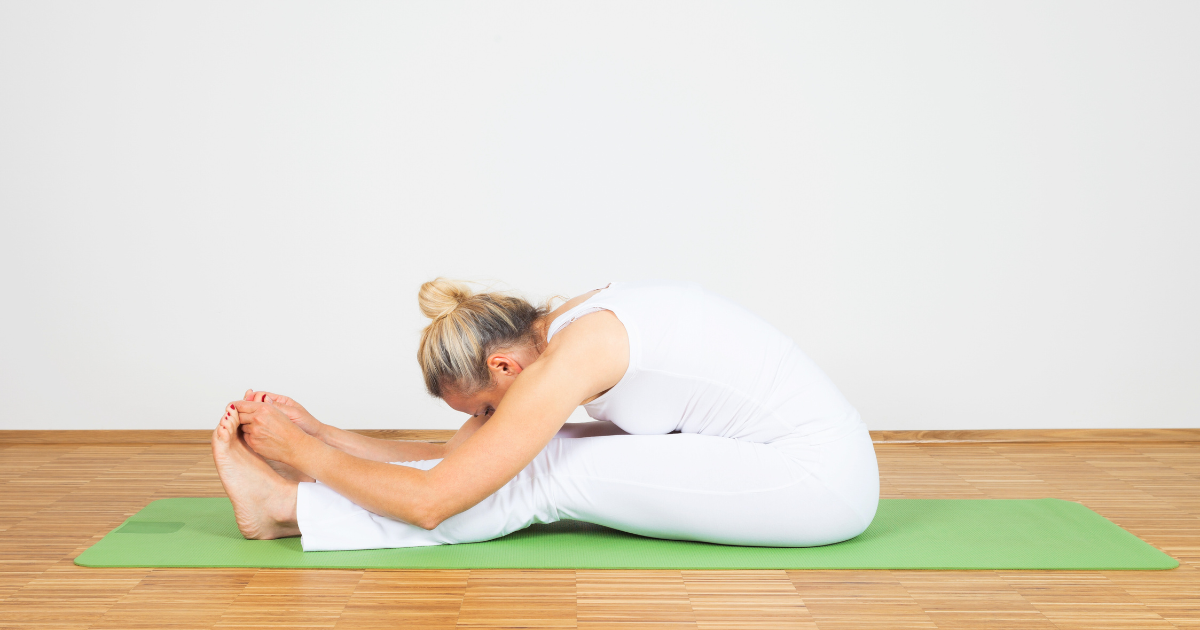
Instructions:
- Sit on the floor with your legs extended in front of you.
- Inhale to lengthen your spine, then exhale as you hinge forward from your hips.
- Reach for your feet or shins, and allow your head to relax towards your knees.
- Hold for a few breaths, focusing on lengthening the spine and feeling a gentle stretch in the back of your legs.
Seated Spinal Twist (Ardha Matsyendrasana)
Seated spinal twist increases spinal mobility, improves digestion, and gently stretches the back muscles.
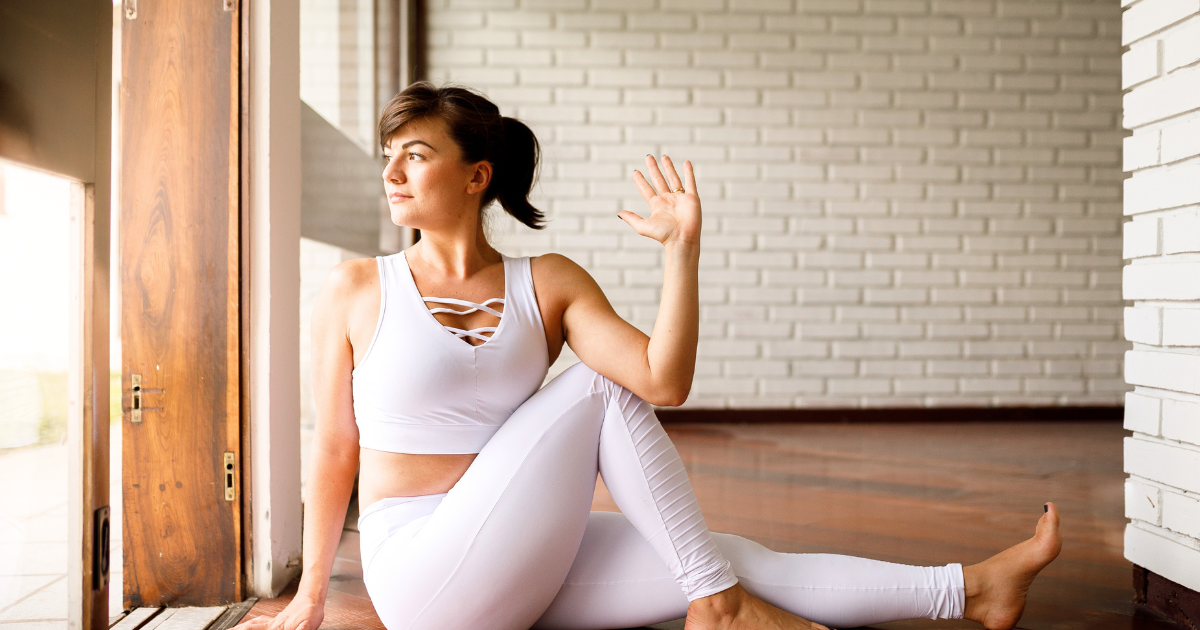
Instructions:
- Sit with your legs extended in front of you.
- Bend your right knee and place your right foot flat on the floor, close to your left thigh.
- Place your left upper arm or elbow over your right knee and gently twist your upper body to the right, looking over your right shoulder.
- Hold for a few breaths, then repeat on the other side.
Butterfly Pose (Baddha Konasana)
Butterfly pose opens the hips and stretches the inner thighs, reducing stiffness in the hip joints.
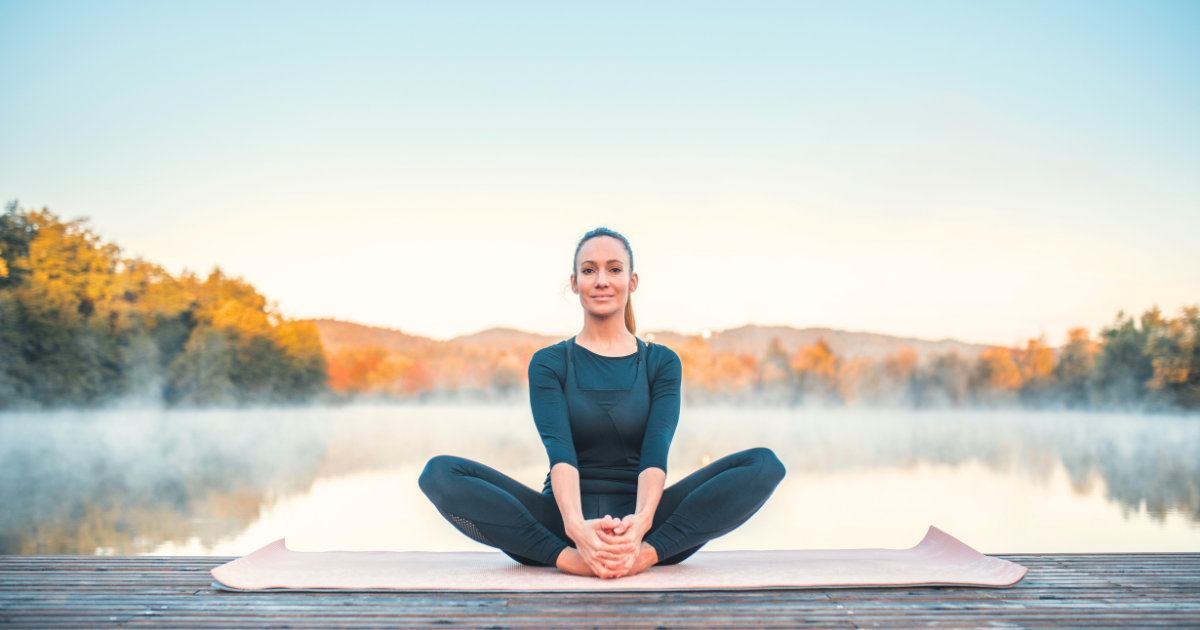
Instructions:
- Sit on the floor and bring the soles of your feet together, allowing your knees to gently fall to the sides.
- Hold onto your feet or ankles. Inhale to lengthen your spine, then exhale as you fold forward, bringing your chest towards your feet.
- Stay in this position for a few breaths, feeling a gentle stretch in your inner thighs and groin.
Standing Poses
Mountain Pose (Tadasana)
Mountain pose improves posture, stability, and grounding, which can alleviate joint pain and enhance balance.
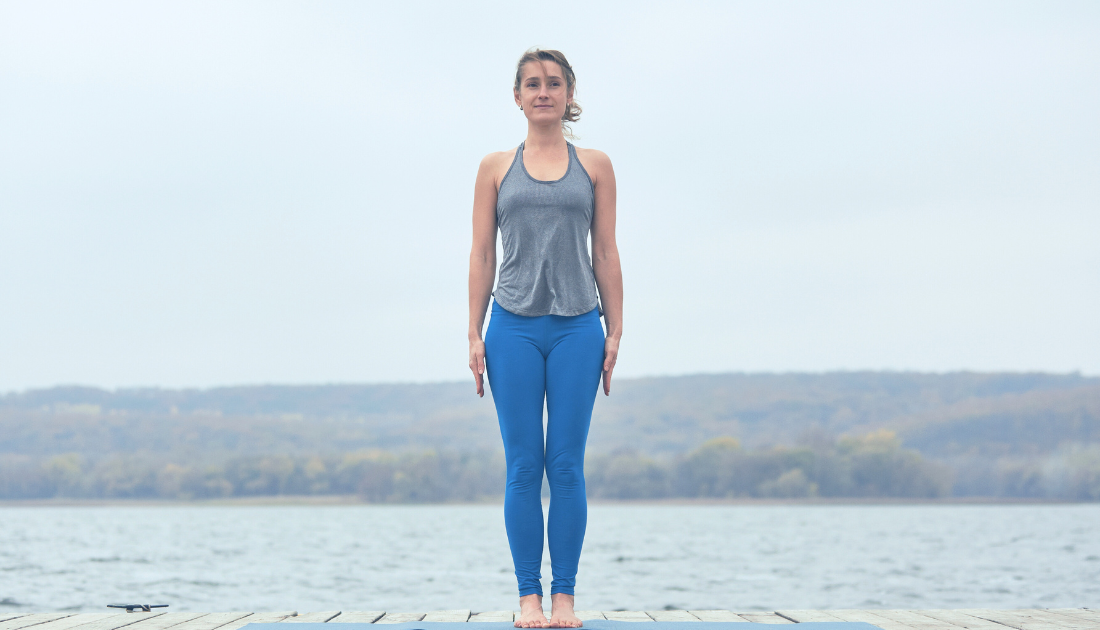
Instructions:
- Stand tall with your feet hip-width apart.
- Distribute your weight evenly on both feet and engage your leg muscles.
- Lengthen your spine, relax your shoulders, and allow your arms to hang by your sides.
- Take deep breaths, grounding yourself and finding a sense of stability.
Tree Pose (Vrikshasana)
Tree pose increases strength and stability in the legs and improves balance.
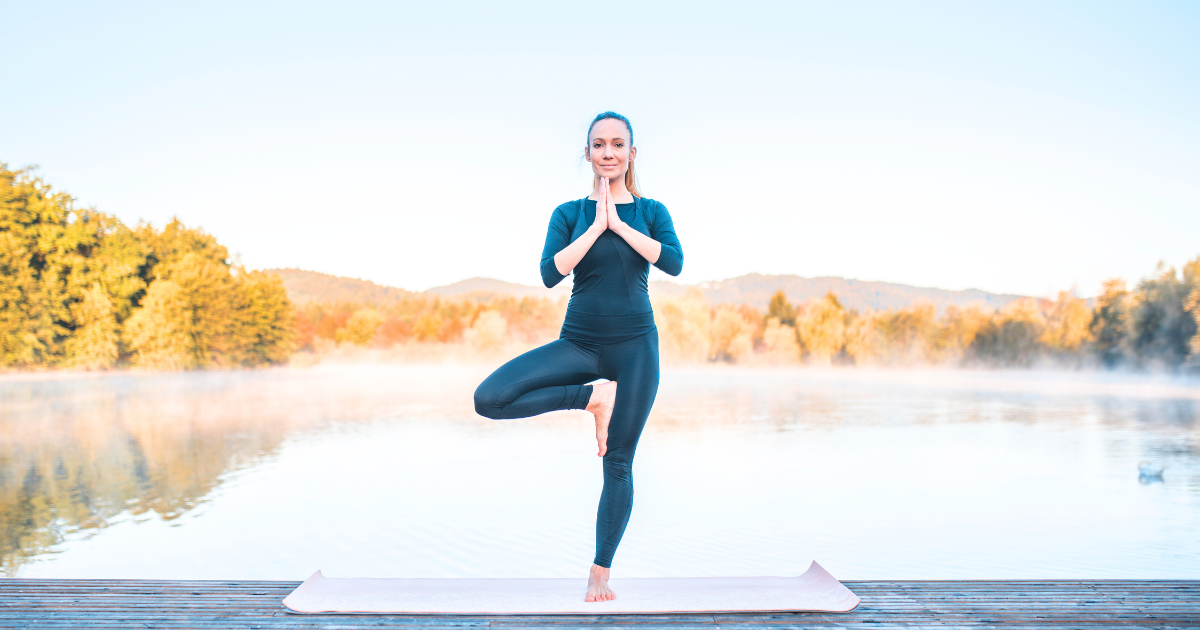
Instructions:
- Start in Mountain Pose.
- Shift your weight onto your left foot, then bend your right knee and place the sole of your right foot on your inner left thigh or calf (avoid placing your foot on the knee joint).
- Find your balance and bring your hands to your heart center or extend them overhead.
- Hold for a few breaths, then switch sides.
Warrior II (Virabhadrasana II)
Warrior – 2 pose strengthens and stretches the legs, hips, and shoulders, promoting joint flexibility and stability.
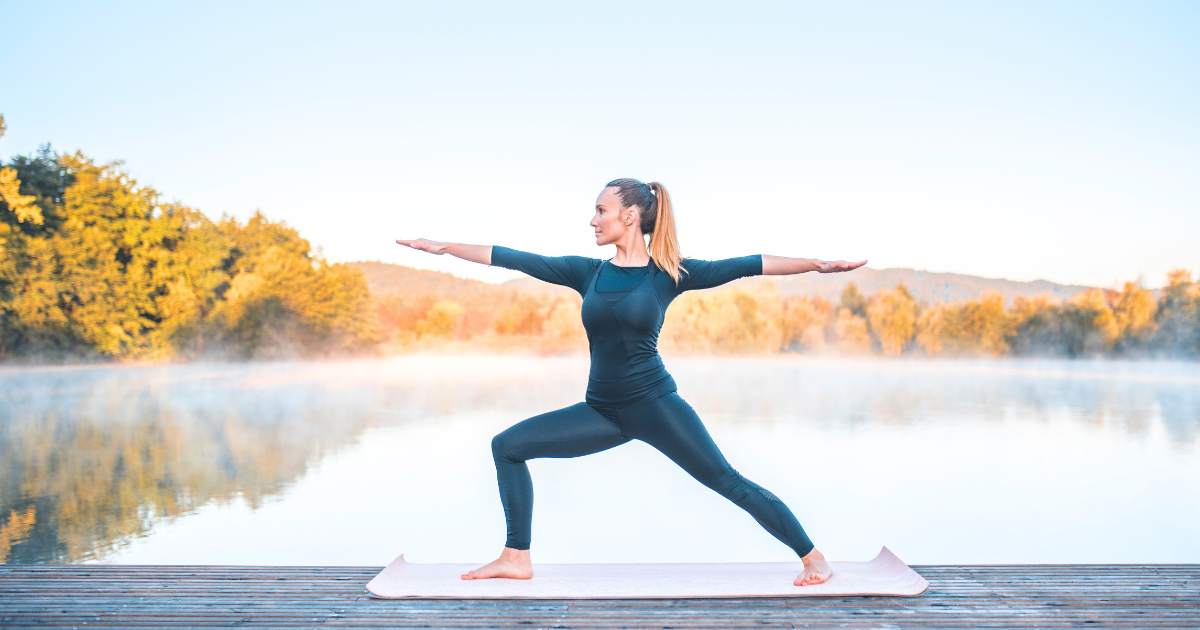
Instructions:
- Stand with your feet wide apart, about 4-5 feet.
- Turn your right foot out 90 degrees and align your left heel with the arch of your right foot.
- Bend your right knee, keeping it in line with your ankle, and extend your arms parallel to the ground, reaching out in opposite directions.
- Gaze over your right fingertips and hold for a few breaths. Repeat on the other side.
Triangle Pose (Trikonasana)
The triangle pose stretches and strengthens the legs, hips, and spine, improving overall balance and mobility.
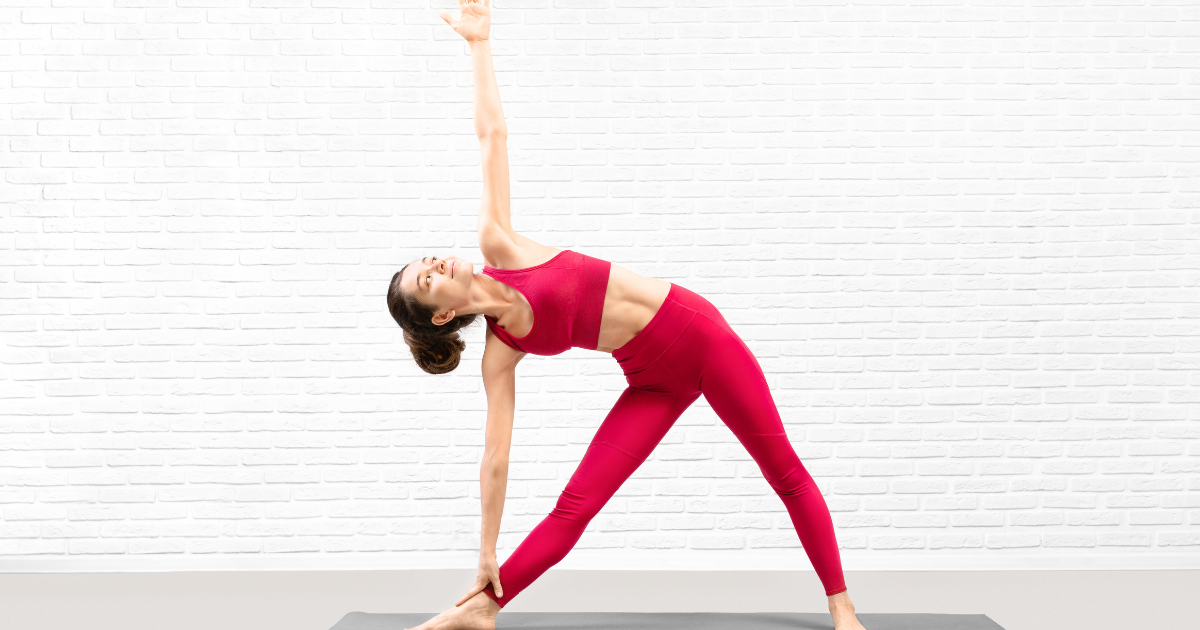
Instructions:
- From Warrior II, straighten your right leg and reach your right arm forward, tilting your torso to the right.
- Place your right hand on your shin, ankle, or the floor, and extend your left arm towards the ceiling.
- Gently turn your head to gaze at your left hand.
- Hold for a few breaths, then repeat on the other side.
Hip Openers
Pigeon Pose (Eka Pada Rajakapotasana)
Opens the hips, stretches the glutes and hip flexors, and reduces hip joint stiffness.
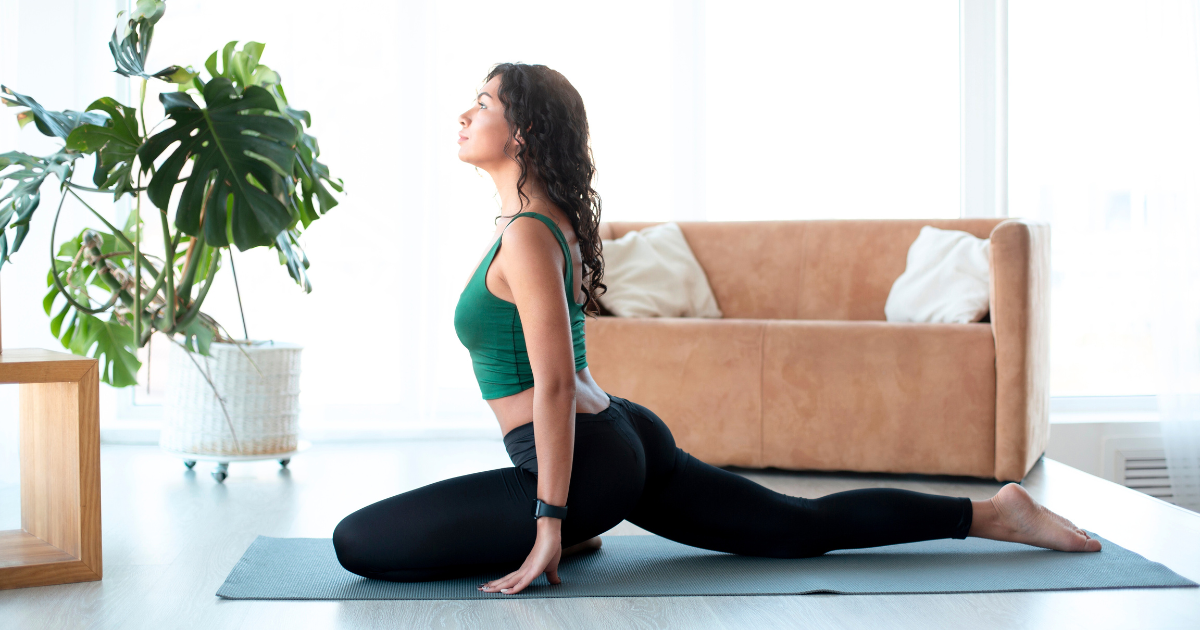
Instructions:
- Start in a high plank position. Bring your right knee forward, placing it behind your right wrist and your right ankle near your left wrist.
- Slide your left leg back, keeping your toes pointed.
- Adjust your hips so that they are squared towards the front of the mat.
- Stay upright or fold forward, resting on your forearms or a bolster. Hold for a few breaths, then switch sides.
Thread the Needle Pose
Releases tension in the upper back and shoulders and promotes spinal mobility.
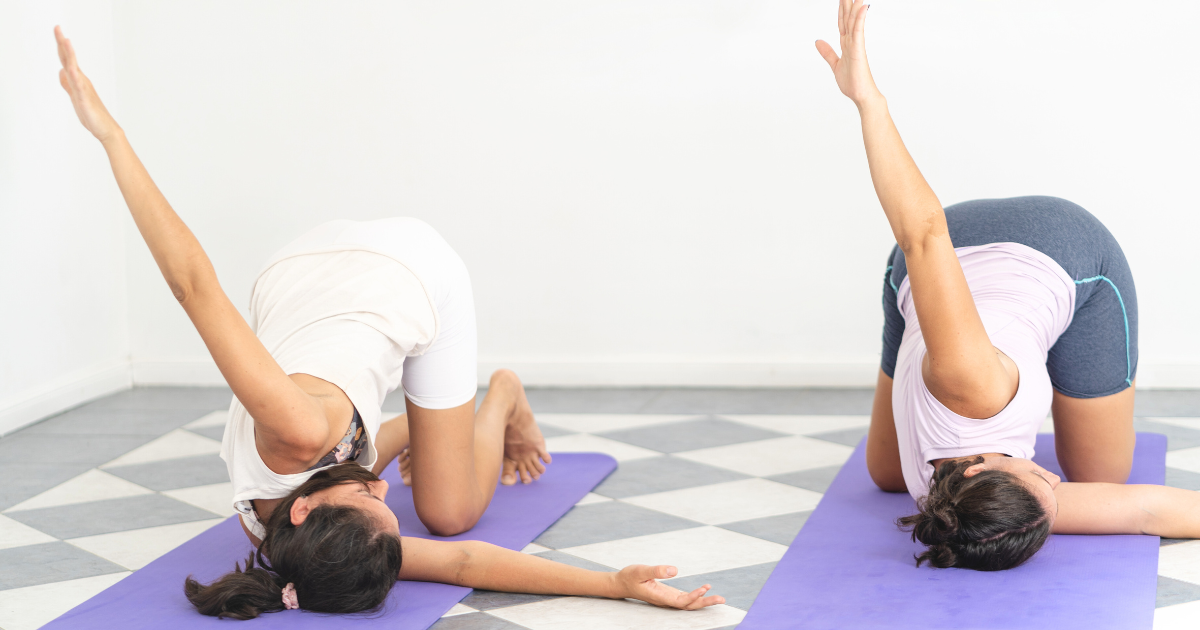
Instructions:
- Begin on all fours in a tabletop position.
- Slide your right arm underneath your left arm, lowering your right shoulder and your right cheek to the ground.
- Keep your left hand grounded for support.
- Hold for a few breaths, feeling a gentle stretch in your upper back and shoulders.
- Repeat on the other side.
Garland Pose (Malasana)
Garland pose stretches the hips, groin, and lower back and improves hip joint flexibility.
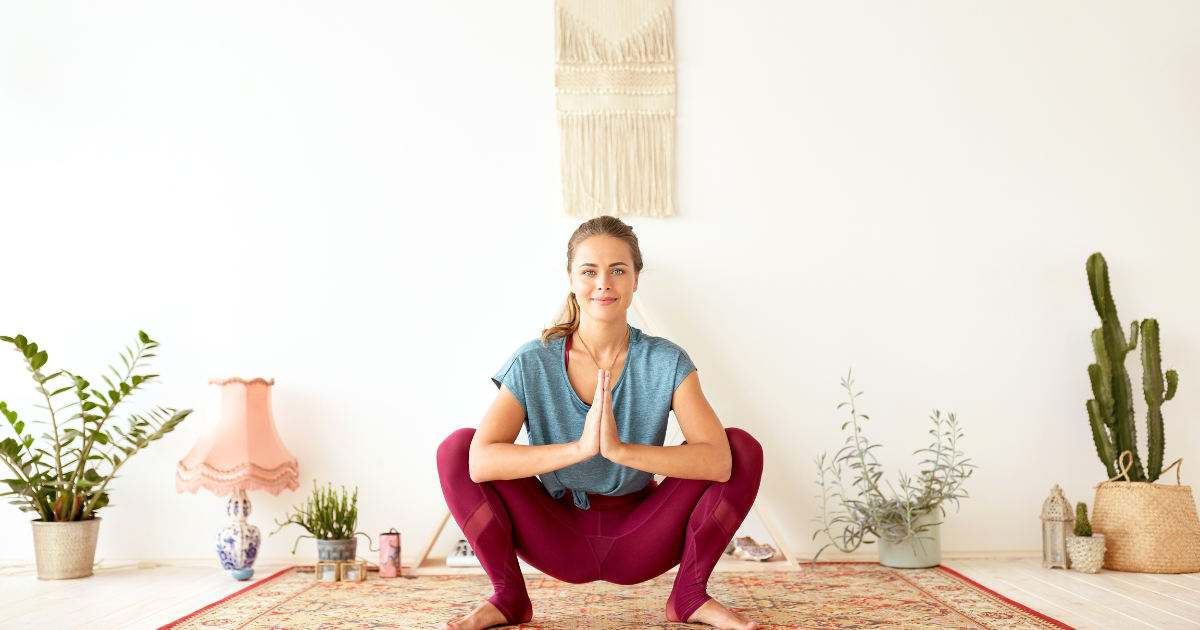
Instructions:
- Stand with your feet wider than hip-width apart, toes turned out.
- Lower your hips towards the floor, coming into a deep squat.
- Bring your hands together at your heart center and use your elbows to gently press your knees apart.
- Hold for a few breaths, feeling a stretch in your hips and groin.
Gentle Backbends
Bridge Pose (Setu Bandhasana)
Bridge pose strengthens the back, glutes, and legs and improves spinal flexibility.
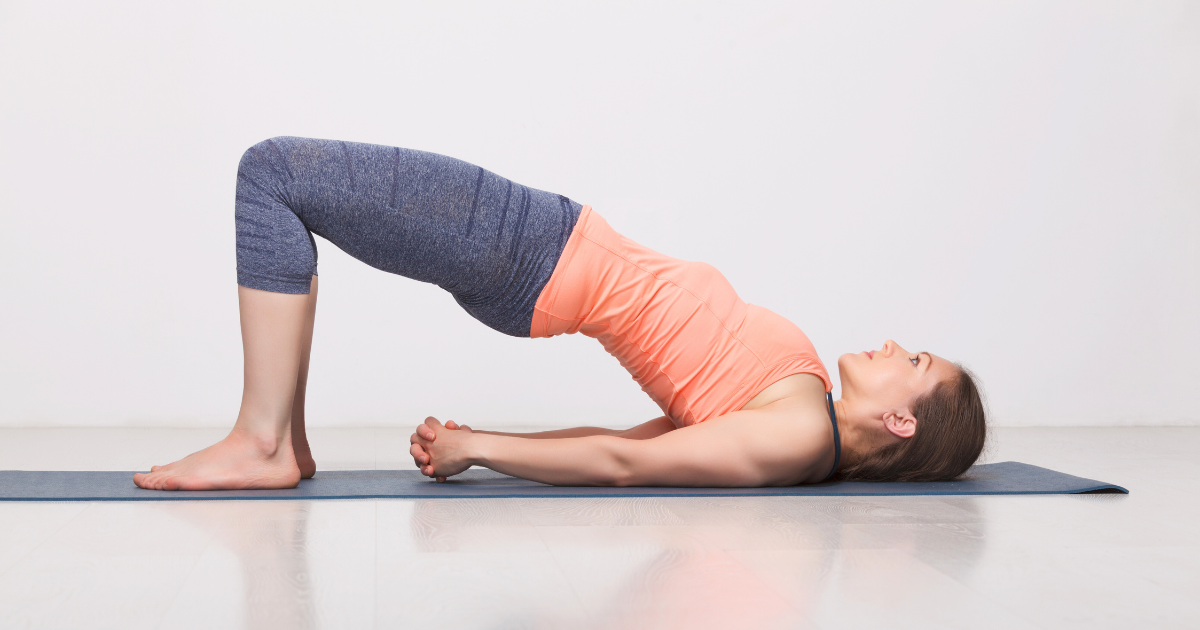
Instructions:
- Lie on your back with your knees bent and feet flat on the floor, hip-width apart.
- Press your feet firmly into the ground and lift your hips towards the ceiling.
- Interlace your hands under your lower back, and gently roll your shoulders underneath your body.
- Hold for a few breaths, feeling a stretch in your chest and front of the thighs.
Sphinx Pose (Salamba Bhujangasana)
Sphinx pose opens the chest, stretches the abdomen, and promotes gentle backbending without straining the spine.
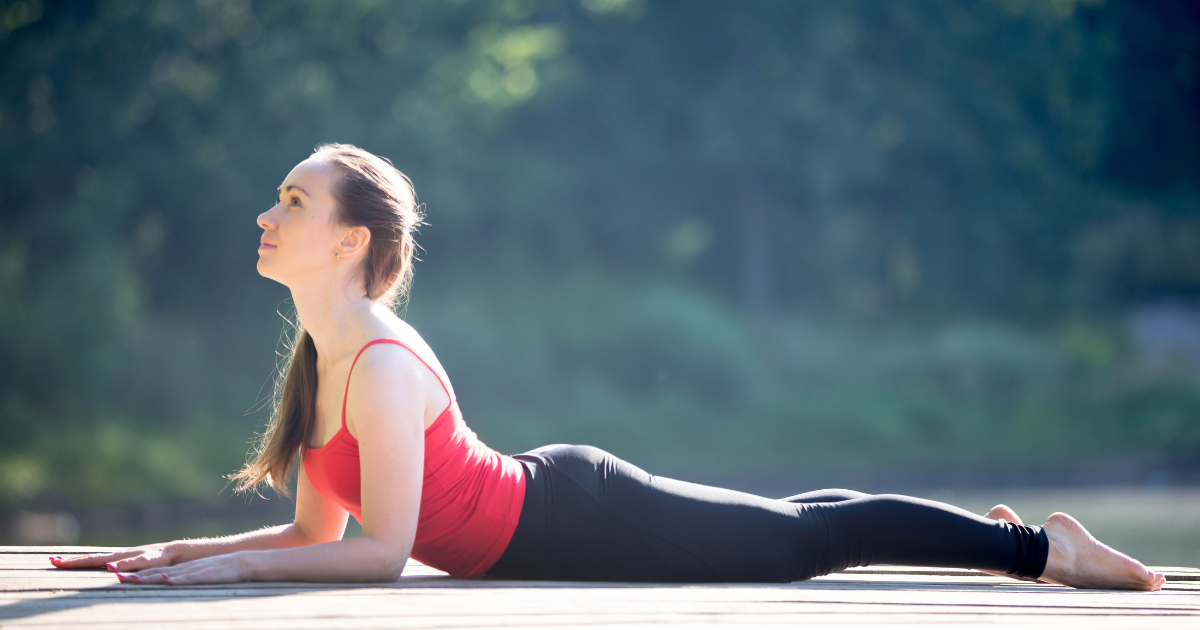
Instructions:
- Lie on your stomach with your forearms on the ground, elbows directly beneath your shoulders.
- Press your forearms into the floor, lifting your chest and upper back.
- Relax your shoulders away from your ears and keep your gaze forward.
- Hold for a few breaths, feeling a gentle extension in your spine.
Cat-Cow Stretch (Marjaryasana/Bitilasana)
Cat-Cow stretch increases spinal mobility, releases tension in the back, and improves posture.
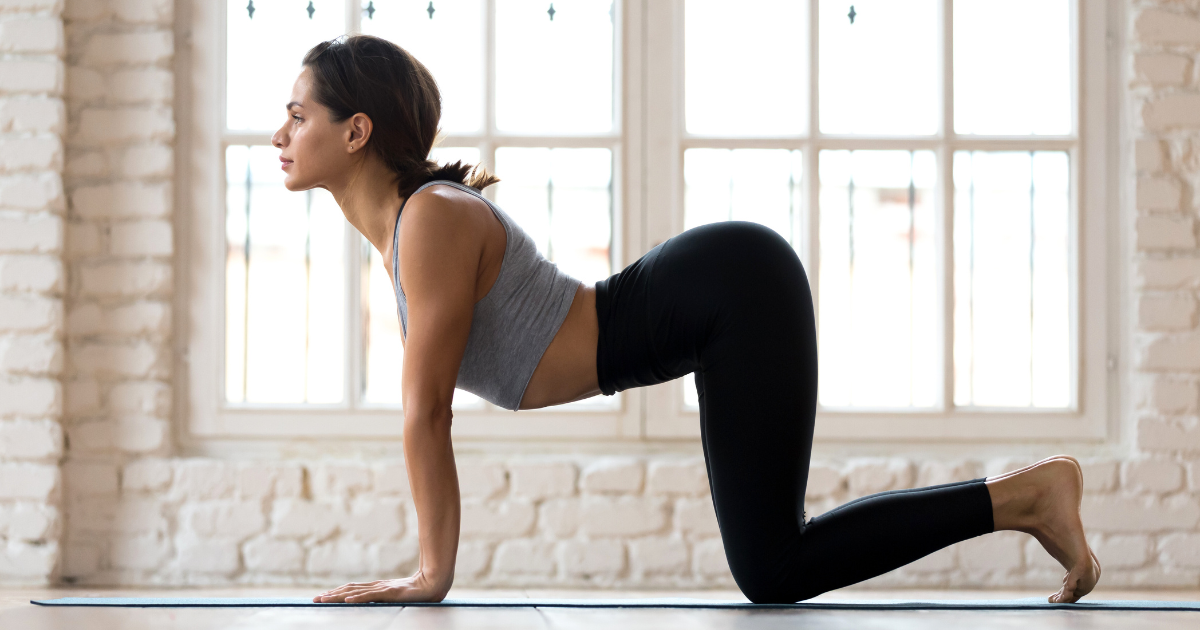
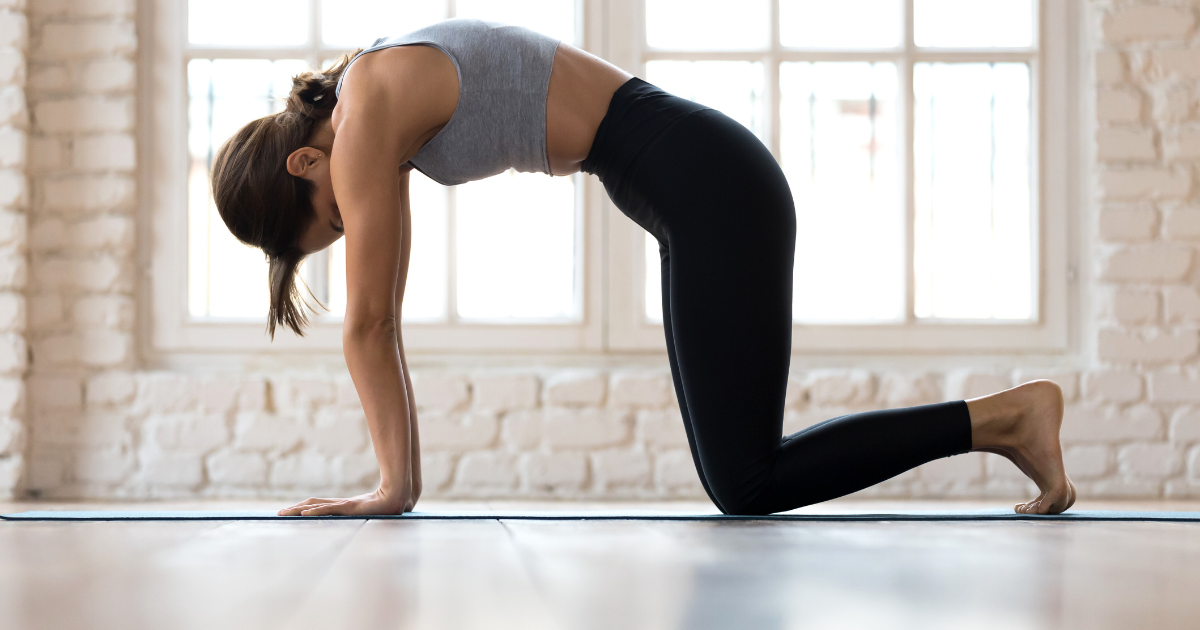
Instructions:
- Start on all fours in a tabletop position.
- On an inhale, arch your back and lift your chest, bringing your shoulder blades together (Cow Pose).
- Exhale as you round your spine, dropping your head forward and drawing your navel towards your spine (Cat Pose).
- Repeat this gentle flow of movement for a few rounds, syncing your breath with the motion.
Restorative Poses
Child’s Pose (Balasana)
Promotes relaxation, releases tension in the back and hips, and fosters a sense of calm.
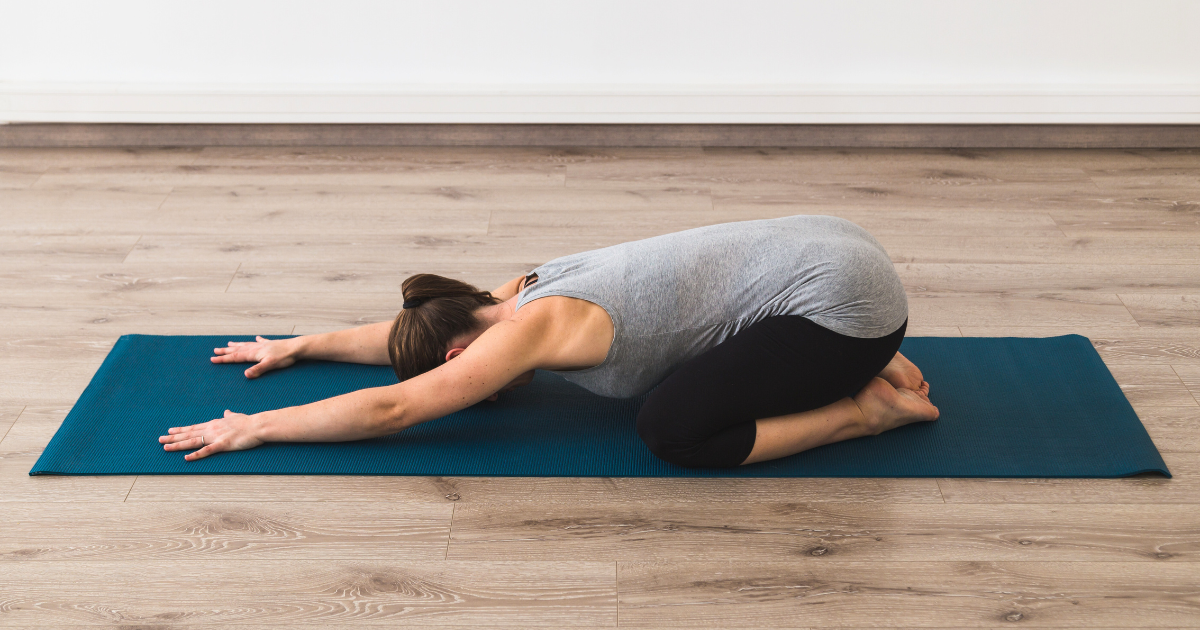
Instructions:
- Kneel on the ground and sit back on your heels.
- Lower your torso towards the floor, bringing your forehead to the mat.
- Extend your arms forward or alongside your body, palms facing up.
- Relax into the pose, allowing your spine to lengthen and your breath to deepen.
Legs Up the Wall Pose (Viparita Karani)
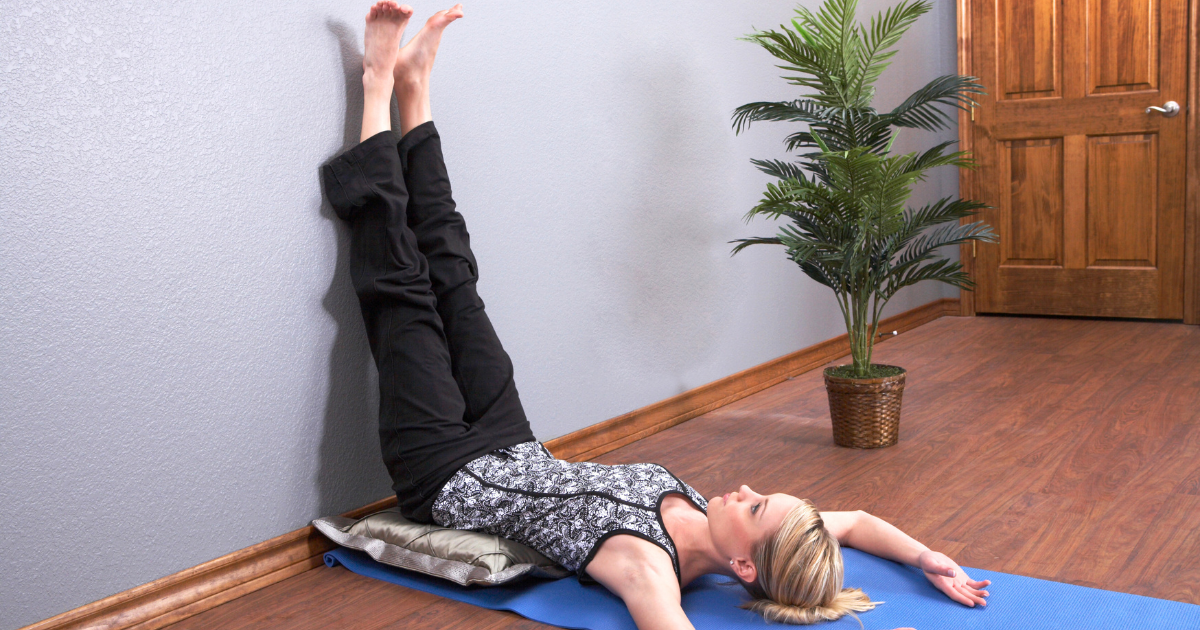
Instructions:
- Sit with your side against a wall with a cushion beside you, then gently lie down and swing your legs up against the wall.
- Keep your legs straight or with a slight bend in the knees.
- Rest your arms by your sides or place your hands on your belly.
- Relax in this position, focusing on your breath and feeling a release in your lower body.
Takeaway
Yoga, with its gentle movements, mindful breathing, and focus on relaxation, offers a holistic approach to managing arthritis. Incorporating the appropriate poses can enhance joint flexibility, reduce pain, and improve overall well-being. However, it is essential to approach yoga practice with caution, seeking guidance from healthcare professionals and modifying poses as necessary to ensure a safe and effective practice. Everyone will have different levels of abilities, so some poses may not be appropriate for all. Therefore it is important to pick the right poses for your condition so you dont do anything that could possibly make your symptoms worse. It would be a great idea to start doing yoga under the guidance of a knowledgeable instructor.

